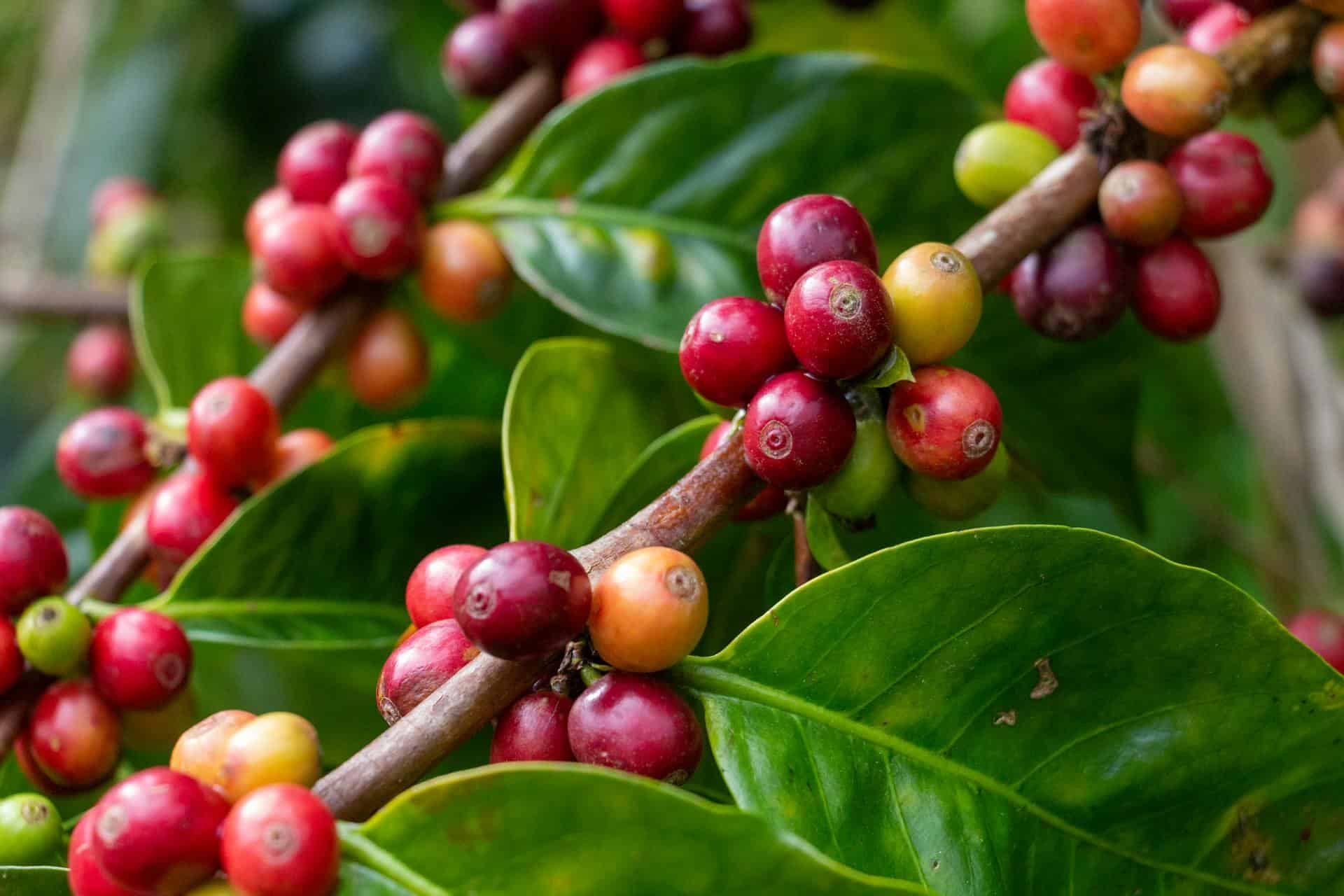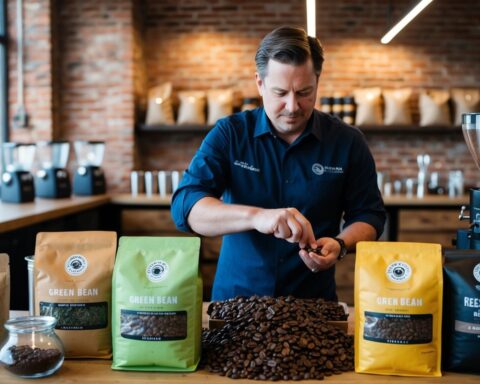Coffee is more than just a beverage; it’s a global ritual, a morning necessity, and for many, a passion. But behind every cup lies a journey that begins long before the beans ever reach your grinder. One of the most crucial—and often overlooked—steps in this journey is coffee processing. The way coffee cherries are transformed into green beans ready for roasting has a profound impact on the flavors, aromas, and textures that end up in your cup.
In this article, we’ll embark on a flavorful exploration of the main coffee processing methods: washed, natural, honey, and the increasingly popular aerobic and anaerobic fermentations. We’ll uncover how each method works, what makes them unique, and how they shape the sensory experience of your daily brew.
The Coffee Cherry: Where It All Begins
Before diving into processing, it’s important to understand what’s being processed. Coffee beans are actually seeds, nestled inside the fruit of the coffee plant, known as the coffee cherry. Each cherry typically contains two seeds (the beans), surrounded by layers: the skin (exocarp), pulp (mesocarp), mucilage (a sticky, sugary layer), parchment (endocarp), and finally, the silver skin.
The goal of processing is to remove these layers and dry the beans to a stable moisture content, all while preserving—or even enhancing—the flavors locked inside. The method chosen can highlight different aspects of the coffee’s character, from bright acidity to deep fruitiness or syrupy sweetness.
Washed Process: The Pursuit of Clarity
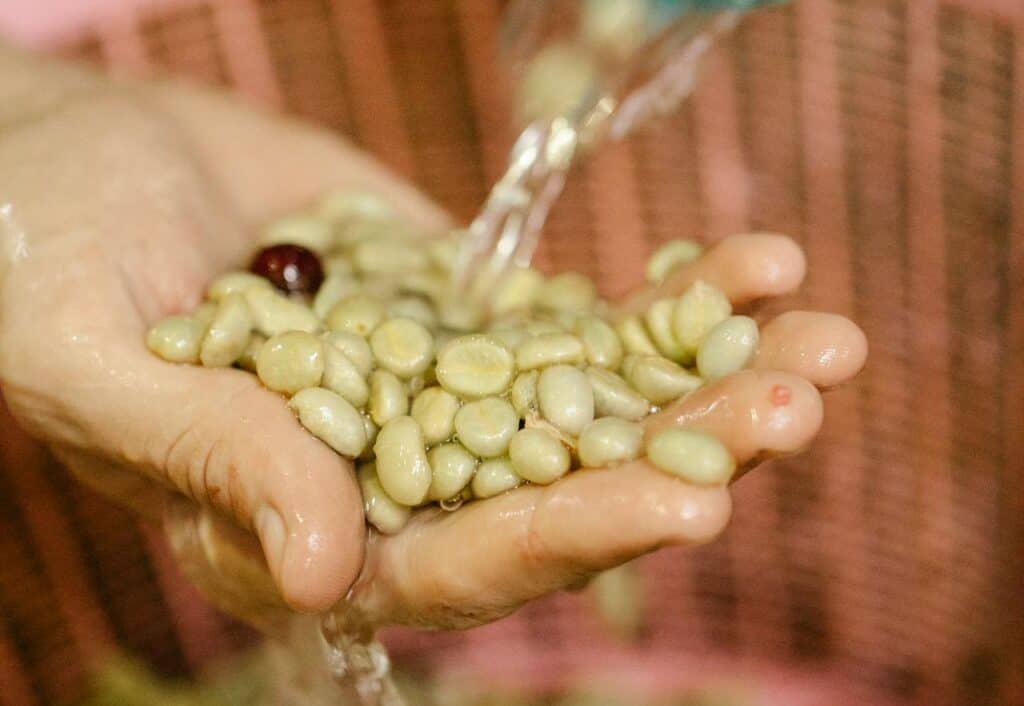
Method
The washed process, also known as the wet process, is the most widely used method in specialty coffee-producing regions like Ethiopia, Kenya, and Colombia. Here’s how it works:
- Harvesting: Ripe cherries are picked, often by hand.
- Pulping: The outer skin and most of the pulp are removed using a pulping machine.
- Fermentation: The beans, still coated in mucilage, are placed in fermentation tanks (with or without water) for 12–72 hours. Natural enzymes and microbes break down the mucilage.
- Washing: After fermentation, the beans are washed with clean water to remove any remaining mucilage.
- Drying: The clean beans are spread out to dry in the sun or in mechanical dryers until they reach the desired moisture content.
Flavor Profile
Washed coffees are celebrated for their clarity, brightness, and ability to showcase the intrinsic qualities of the bean’s origin. The process removes most of the fruit material, allowing the bean’s natural flavors—shaped by variety, soil, and climate—to shine through. Expect vibrant acidity, floral or citrus notes, and a clean, crisp finish.
Example
A washed Ethiopian Yirgacheffe might burst with jasmine, lemon, and bergamot, while a washed Kenyan could offer blackcurrant, grapefruit, and a wine-like acidity.
Natural Process: The Art of Sun and Patience
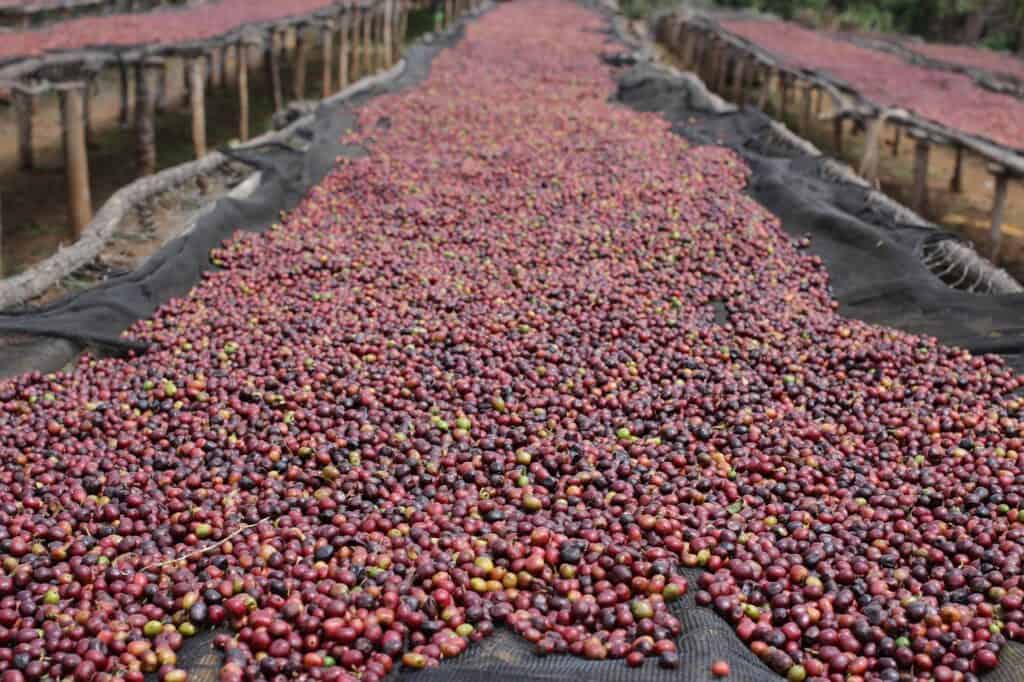
Method
The natural, or dry, process is the oldest method of coffee processing, still common in regions with limited water resources, such as Ethiopia and Brazil. Here’s the process:
- Harvesting: Ripe cherries are picked and sorted to remove underripe or damaged fruit.
- Drying: Whole cherries are spread out on raised beds or patios and dried in the sun. This can take two to four weeks, during which the cherries are regularly turned to prevent mold and ensure even drying.
- Hulling: Once fully dried, the outer layers (skin, pulp, and parchment) are mechanically removed, leaving the green bean.
Flavor Profile
Natural-processed coffees are known for their bold, fruity, and sometimes wild flavors. Because the beans dry inside the intact fruit, they absorb sugars and flavors from the pulp, resulting in a heavier body, pronounced sweetness, and notes of berries, tropical fruit, or even wine. However, the process is riskier—if not managed carefully, it can lead to over-fermentation or off-flavors.
Example
A natural-processed Ethiopian Sidamo might explode with blueberry, strawberry, and chocolate notes, while a Brazilian natural could offer nutty, chocolatey, and dried fruit flavors.
Honey Process: The Sweet Middle Ground

Method
The honey process, also called pulped natural, is a hybrid between washed and natural methods, popular in Costa Rica and parts of Central America. The name “honey” refers to the sticky mucilage left on the beans during drying—not to any actual honey.
- Harvesting: Ripe cherries are picked and sorted.
- Pulping: The skin is removed, but some or all of the mucilage is left on the bean.
- Drying: The beans, coated in mucilage, are dried on raised beds or patios. The amount of mucilage left and the drying conditions can vary, leading to different “honey” types: yellow, red, or black, with black honey having the most mucilage and longest drying time.
Flavor Profile
Honey-processed coffees offer a balance between the clarity of washed and the fruitiness of natural. They tend to have a syrupy body, moderate acidity, and flavors ranging from caramel and stone fruit to tropical fruit and brown sugar. The more mucilage left on the bean, the sweeter and more complex the cup.
Example
A yellow honey Costa Rican might have notes of apricot, honey, and milk chocolate, while a black honey could be intensely sweet, with plum, raisin, and molasses.
Aerobic and Anaerobic Fermentation: The New Frontier

Method
In recent years, experimental fermentation techniques have taken the specialty coffee world by storm. The two main types are aerobic (with oxygen) and anaerobic (without oxygen) fermentation.
- Aerobic Fermentation: Beans (with or without mucilage) are fermented in open tanks or containers exposed to air. This is similar to traditional washed processing but can be extended or controlled for specific flavor outcomes.
- Anaerobic Fermentation: Beans are placed in sealed tanks with little or no oxygen, sometimes with added CO₂. The lack of oxygen encourages different microbial activity, leading to unique flavor compounds.
Both methods can be applied to washed, natural, or honey processes, and producers often experiment with fermentation times, temperatures, and even adding fruit or spices to the tanks.
Flavor Profile
Aerobic and anaerobic fermentations can produce wild, complex, and sometimes polarizing flavors. Anaerobic coffees, in particular, may have intense fruitiness, lactic acidity (think yogurt or kefir), spice, or even boozy notes. The flavors can be layered and unexpected, with a creamy or velvety mouthfeel.
Example
An anaerobic natural from Colombia might taste like cherry cola, passionfruit, and cinnamon, while an aerobic honey from Costa Rica could offer floral, citrus, and tropical fruit notes with a sparkling acidity.
Wet Hulled: Indonesia’s Earthy Signature
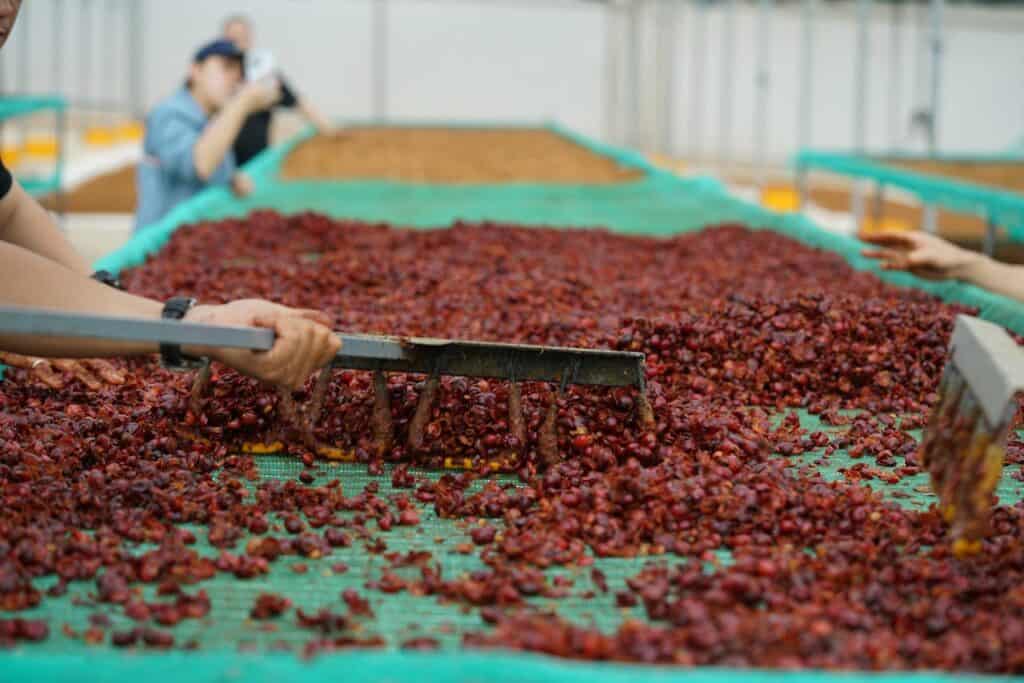
Method
The wet hulled process, or “Giling Basah,” is a traditional method unique to Indonesia, especially Sumatra. After ripe cherries are harvested and pulped, the beans—still coated in mucilage—are fermented briefly, then partially dried to about 30–40% moisture. Unlike other methods, the parchment layer is removed while the beans are still wet and pliable. The hulled beans are then spread out to finish drying in the open air, often on patios or tarps, until they reach exportable moisture levels.
Flavor Profile
Wet hulled coffees are known for their heavy, syrupy body and low acidity. The process imparts deep, earthy flavors, often with notes of dark chocolate, tobacco, spice, and a mossy, forest-like quality. The cup is bold and rustic, with a lingering finish that reflects the lush, humid landscapes where these coffees are grown.
Example
A classic wet hulled Sumatran Mandheling might offer flavors of cedar, sweet pipe tobacco, and dark chocolate, with a velvety mouthfeel and a hint of tropical earthiness.
Comparing the Methods: A Flavorful Spectrum
To truly appreciate the impact of processing, imagine tasting four coffees from the same farm, variety, and harvest, each processed differently:
- Washed: Clean, bright, and transparent. The origin shines, with crisp acidity and delicate florals.
- Natural: Bold, sweet, and fruity. Berry and tropical notes dominate, with a heavier body.
- Honey: Balanced, sweet, and syrupy. Stone fruit, caramel, and a rounded acidity.
- Anaerobic: Intense, complex, and sometimes funky. Unexpected flavors, creamy texture, and a lingering finish.
- Wet Hulled: Deep, earthy, and full-bodied. Notes of dark chocolate, spice, and forest floor, with low acidity and a rustic, lingering finish.
Each method is a tool in the producer’s kit, allowing them to highlight different aspects of their coffee. The choice of process is influenced by tradition, climate, available resources, and the desired flavor profile.
The Producer’s Perspective: Art, Science, and Risk
For coffee producers, processing is both an art and a science. It requires careful monitoring of temperature, humidity, and fermentation times. Small changes can have big effects—too much fermentation can lead to sour or off-flavors, while too little can result in a flat cup.
Natural and honey processes are riskier, as they depend on consistent weather and meticulous attention to detail. Washed processing is more predictable but requires access to clean water. Experimental fermentations demand even more control and expertise. In regions like Indonesia, wet hulled processing adds another layer of complexity, as producers must adapt to local climate and unique post-harvest steps.
Yet, the rewards can be great. A well-executed process can elevate a coffee from good to exceptional, fetching higher prices and recognition in the specialty market.
The Roaster and Barista: Bringing Out the Best
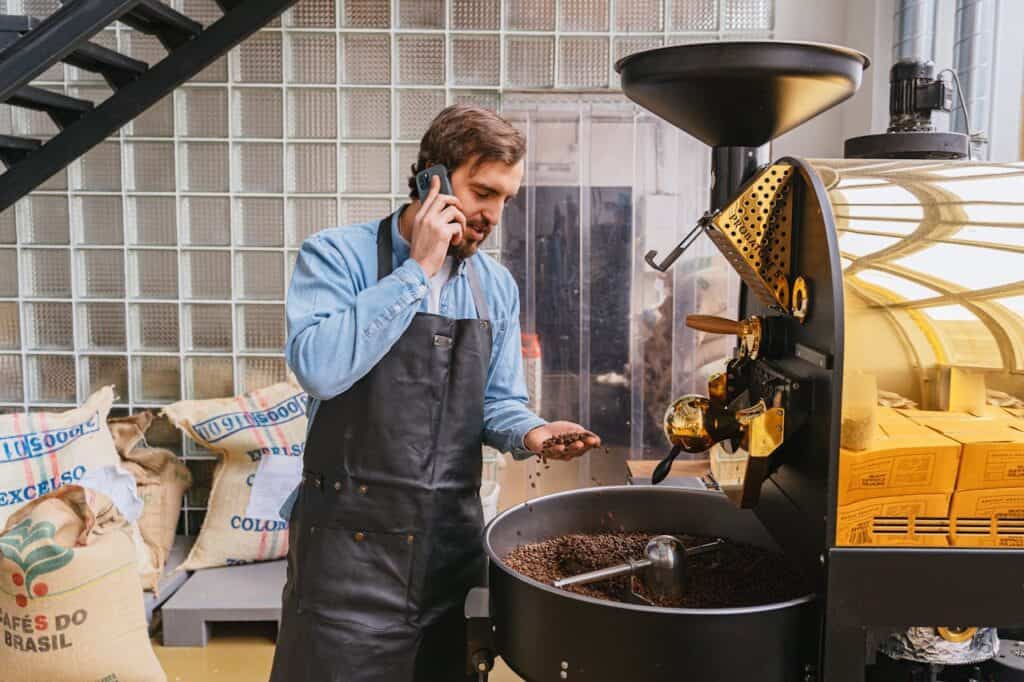
Once processed and dried, the green beans are shipped to roasters, who must adapt their roasting profiles to highlight the unique qualities of each process. Washed coffees may benefit from lighter roasts to preserve acidity, while naturals can handle a bit more development to balance their sweetness.
Baristas, too, play a role—adjusting grind size, brew time, and extraction to bring out the best in each coffee. A washed Ethiopian might sing as a pour-over, while a natural Brazilian could shine in espresso.
The Consumer: Expanding Your Palate
As a coffee drinker, understanding processing opens up a world of flavor. Next time you’re at your favorite café or browsing bags of beans, look for the processing method on the label. Try tasting the same origin processed in different ways, or explore new and experimental fermentations.
You might discover that you love the clean, tea-like qualities of washed coffees, the jammy sweetness of naturals, the balanced complexity of honey, or the wild ride of anaerobic fermentations. Each cup is a reflection of choices made at every step of the journey—from farm to mill to roaster to you.
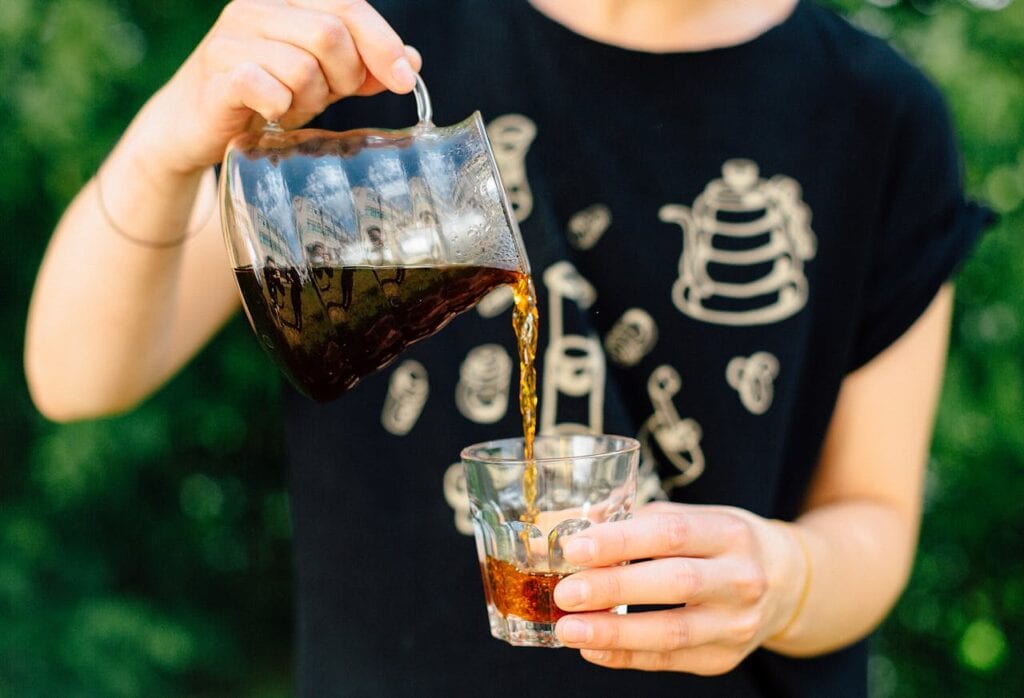
Coffee processing is a fascinating intersection of tradition, innovation, and sensory exploration. Whether it’s the clarity of washed, the fruit-forward punch of natural, the syrupy sweetness of honey, or the experimental flair of aerobic and anaerobic fermentations, each method offers a unique window into the world of coffee.
So, the next time you savor your morning brew, take a moment to appreciate the journey it’s been on. Behind every cup is a story of sun, rain, hands, and hearts—all working together to unlock the flavors hidden within a humble cherry. And as coffee processing continues to evolve, who knows what new tastes and experiences await us in the cups of tomorrow?
